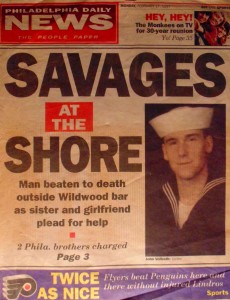Click through for full-image gallery. Continue reading
Category Archives: Uncategorized
Francis Ford Coppola’s Advice to Young Filmmakers (2008)
“I think my best advice is really contained in the story of what happened to me when I wrote the screenplay of the film, Patton. One of the reasons they explained that they didn’t like it was the opening. I had this unusual opening where the character Patton comes right up on front of a big flag and makes a speech. And he’s a four-star general and he has medals and awards and pistols, and he’s making the speech. And they said to me, ‘It’s very confusing, this speech. First of all, to start a movie not only with a speech like that, but then in the scene right after it, he only has two stars and he doesn’t have the medals. It’ll be very confusing and we don’t like the beginning.’ Well, eventually, they did find an actor who liked it, George C. Scott, and a director who that opening appealed to, and who shot it wonderfully. And that is considered one of the most effective openings in the movie canon, which means – young people – that the things you get fired for when you’re young are the same things you win awards for when you’re old. So you have to be very courageous about your ideas because it’s not their fault. It’s just that when you come up with something really good, it means it’s different, and it’s different from what they expect. They’re likely to fire you or discredit you, but years later, if you survive, they’ll bring it out as one of the great things you did.”
(Excerpted from Hollywood’s Best Film Directors)
A Fair & Balanced Assessment of Taylor Swift’s Celebrity Persona
 October 27, 2014 – Taylor Swift celebrates the release of her new album, 1989, with an iHeart Radio Secret Session performed from high atop a sprawling rooftop in Lower Manhattan. After opening with an aptly-titled “Welcome to New York,” the 24-year old addresses an adoring audience as follows:
October 27, 2014 – Taylor Swift celebrates the release of her new album, 1989, with an iHeart Radio Secret Session performed from high atop a sprawling rooftop in Lower Manhattan. After opening with an aptly-titled “Welcome to New York,” the 24-year old addresses an adoring audience as follows:
“We are on a rooftop in my neighborhood in New York City. Essentially the Empire State Building is behind us and it was lighting up to the beat of that song. I have no ability to be calm right now because my album, 1989, just came out today. I have, like, no chill; no ability to relax. And I am up here with a few hundred people who I have hand-picked. The thing is – if you don’t know what a secret session is – it’s kind of a tradition that I started when I was almost finished with my new album, 1989. I knew I was so proud of it that I wanted to play it for fans as early as possible. And I wanted to do it in these secret little gatherings. And so I held these parties in my houses, in my living rooms, and I invited 89 fans to each one. I did L.A., Nashville, New York, Rhode Island, London. And I played the entire album early for people. And they kept the secrets about what these songs were about – the titles, the lyrics. And now the album is out. And the difference between this secret session and those is that I will be playing those songs for you guys for the first time on this rooftop. Now, uh, one thing I’ve really been trying to do lately … I want to meet as many of you as possible. You have been so good to me. And I realize the people on the rooftop here are people I found on the internet, or on Instagram, or on Tumblr and Twitter. But I realize I can’t cyberstalk everyone. So that’s why for the first week of 1989 being for sale, if you buy the album you get a code. If you enter that code on my website you have an opportunity to win one of a thousand tickets to the tour or 500 meet-n-greets. So that’s if you buy the album in the first week. I want to meet as many of you as possible.”
So far as platinum branding goes, Taylor’s speech is nothing short of pristine. And yet, the semantics reveal a great deal about who and what Taylor Swift is, what motivates her, and how the broad-reaching relationship she’s achieved with her audience appears betrayed by a false sense of code. Every push derives from ego – Swift referring to Tribeca as “her neighborhood”; referring to a secret session as a tradition she started. These are the claims of a person who has been propped up – justifiably or otherwise – for so long she’s mistaken billboard marketing for prose. Swift’s M.O. is based on exclusivity, the idea that if you’re a Taylor-affiliated insider (AKA a “Swiftie”), you’re also a member of some sororitorical society – a support group for upper-middle-class females that makes its bank collecting tolls. Swift has been gaming this system since 2011, parlaying celebrity into an unimaginable return. Allow us to review by way of three incidents, all of which have occurred during the past six months alone:
- In mid-December of 2014, Taylor Swift sent holiday packages to a hand-chosen selection of fans. Swift wrapped the majority of these packages herself. We believe this because the pop star personally recorded a video that calls attention to her doing so. Swift is featured wearing various outfits, creating the impression she was engaged in an all-encompassing affair. “It’s Christmas; I’m Santa Claus,” a pajama-clad Taylor Swift reminds everybody. There are boxes laid out across several rooms; a pair of cats keeps getting caught up in the mix. The uploaded video has been professionally edited, allowing for the final four minutes to depart into a montage – die-hard fans opening various packages at home. The coup de grace occurs when Swift herself arrives outside of a Connecticut fan’s front door. The result: a little under 17 million YouTube hits (and counting), along with an avalanche of media stories dedicated to the cause.
- In the middle of January, 2015, Swift made headlines again, this time for sending a personalized care package to a social-media-obsessed fan. Among several trinkets included in this package: a dim-lit Polaroid (of Swift), a personal check for $1,989 (allocated for repayment of student loans), a hand-made painting which featured the number “1989” rather prominently, and a pouch which read, “NEW YORK IS MY BOYFRIEND” (all tips and nods to Swift’s current multimedia marketing campaign). The fan uploaded a seven-minute video of herself opening every item … with Swift’s personal emissary on-hand. The result: an endless cacophony of social-media shares, along with an immoderate blitz of blog posts and articles, all of which combined to render Swift a trending topic throughout that period.
- On April 9, 2015, Taylor Swift announced that her mother was suffering from cancer – a tragic development, not to be minimized, by any means. Swift made the announcement via her Tumblr account. The second and third of five short paragraphs read as follows: “For Christmas this year, I asked my mom that one of her gifts to me be her going to the doctor to get screened for any health issues, just to ease some worries of mine. She agreed, and went in to get checked. There were no red flags and she felt perfectly fine, but she did it just to get me and my brother off her case about it … The results came in, and I’m saddened to tell you that my mom has been diagnosed with cancer. I’d like to keep the details of her condition and treatment plans private, but she wanted you to know.” The statement proceeds from there, explaining that regular testing and early diagnosis are the most prevalent keys to a recovery. Yet consider, if you will, the manner in which Taylor Swift has chosen to divulge this information. She leads with a vignette about herself; about a selfless act that would ensure – subconsciously or otherwise – that the hook of this story should turn its eye upon compassion; upon how one daughter’s altruistic behavior precipitated an early diagnosis, along with the increased possibility for recovery. The story went viral within hours, resulting in a predictable, and wholly warranted, outpouring of emotion. Yet in every mainstream-media retelling, the synopsis included two very necessary bullets: 1) Taylor Swift’s mother, Andrea, had been diagnosed with cancer, and 2) Taylor Swift was responsible for the screening that led to her mother being in treatment. The fact that the younger Swift remained so deliberately scant raises the question of why she would include – nay, even open with – a statement taking personal credit for any of the positives.
But allow us to put Andrea Swift’s diagnosis aside, with sincere wishes for a commendable recovery.
The idea – transparent as it might seem – is for Taylor Swift’s team to create low-cost social media campaigns that bait and switch Swift’s generosity for viral views (i.e., “This is for you, but the point of charity is me.”). Given Swift’s image, very few have seen fit to zero in upon the level of graft. What’s the harm?, one might wonder. The answer supplants its roots in authenticity; what’s conveyed by way of acting based on false, or even Pecksniffian, motives.
At the age of 25, Taylor Swift has built herself into an industry. Swift is beautiful and talented; wholly dedicated to her craft. Everything surrounding her – from platinum records to world tours – has been engineered to appeal to the masses. We are speaking here of a CEO, a corporate entity, the bright-eyed face of Taylor, Inc. – a company whose bread and butter begins, yet no longer ends, with teenage solipsism. We are speaking here of a star who’s worked extremely hard, yet never struggled; whose lyrics represent a one-dimensional – if not entirely virginal – worldview. We are speaking here of a blue-eyed doe who’s spent 10 years attempting to convince the mainstream media that she grew up assuming the role of ugly duckling. Young girls in big houses gravitate toward Taylor Swift because she validates their theory of being. This is Cherry Valance, insisting things ain’t all that easy on the South Side. This is Julia Roberts, attempting to pass herself off as, “just a girl standing in front of a boy, asking him to love her.” This is every girl you knew in high school who unselfconsciously declared she’d had it just a little bit more difficult as a result of her good looks.
Objectively speaking, Taylor Swift’s only legitimate claim to being an outsider arises from her sense of ambition as a child. Pursuing the arts is a tawdry path, particularly for any girl attending elementary school in a Pennsylvania suburb. And yet it is during Swift’s formative years that she begins to rise above the pack. Throughout adolescence, there is no period of boredom, disenchantment, or dissatisfaction with the fact that everything seems to be moving along just fine. There is no drug period, no alcohol abuse, nor outward need based on sexual longing. As Swift matures (in Nashville), a gut-hungry media is left with little more than table scraps; meager food for a tabloid world.
It is for this reason – among others – that Taylor Swift represents an appropriate role model, at least as it pertains to the core audience she enthralls. Swift is safe and pedestrian, completely at home with comparing herself to Cinderella or Juliet, as opposed to, say, Nefertiti or the nymphs of lore. Radical ideas serve little need to the cotillion queen. More importantly, radicalism opens the door toward a life of self-examination, the bane of any teen who aspires to dating the quarterback while singing into her hairbrush, night after night.
During interviews, Swift maintains impeccable posture. She’s done her homework. She understands how to get over. Swift compensates for a lack of spontaneity by referring to anything she advocates as being “amazing” (during a 2014 Late Show appearance, Swift fell back upon this term 6X; Letterman fell back upon it once). While Swift loses points for irresponsibly touting the idea that she’s a victim – of the media, of past relationships, of unflattering perspectives – she deserves taut praise for rarely citing female gender as an issue. In an age of progressive values, Swift represents empowerment; she is millennially removed from what Camille Paglia has often referred to as the Gloria Steinem wing of feminism.
Of course, there is the occasional interview via which Swift suggests her ballads have been unfairly scrutinized as a result of her being a woman. This narrative fails to account for the fact that Taylor Swift – an unparalleled crossover phenomenon – has not only written an inordinate number of love songs, she has subsequently promoted those songs into becoming number-one hits. Each of these songs is a reflection of Swift’s image, an image that will determine the trajectory of her career throughout the next 15 years.
This past February, a Pennsylvania man who claims to have taught Taylor Swift how to play guitar received a cease-and-desist letter from TAS, LLC. This letter demanded said teacher (Ronnie Cremer) take down his not-for-profit website, ITaughtTaylorSwift.com, because it “incorporates the famous Taylor Swift trademark in its entirety and suggests TAS’s sponsorship or endorsement.” TAS’s letter went on to claim, “Use of the domain name is highly likely to dilute, and to tarnish, the famous Taylor Swift trademark.”
There could have been any number of reasons why Swift’s team made the eventual decision to get firm. Ronnie Cremer could have been a sketchy motherfucker; his website could’ve given credence to unverifiable sources. But the sticking point was that Cremer’s story emerged less than two weeks after Swift’s team had taken decisive action to legally trademark the following phrases: “This sick beat,” “Party like it’s 1989,” “[I] could show you incredible things,” “Cause we never go out of style,” and “Nice to meet you, where you been?”. Not only is Taylor Swift far from the original person to have uttered any of these expressions, she blatantly ripped off “Party like it’s 1989,” from Prince. The point being, it’s a slippery slope, allowing the rich to wield commercial control over everyday phrases they didn’t invent. As a matter of precedence, consider Donald Trump, who attempted and failed to trademark his television catchphrase “You’re fired!” back in 2004.
For the first time in her career Taylor Swift is dipping her toes into some lurid waters. Long after she’s washed clean of being a teen idol, long after she’s done dancing in the front row of every awards ceremony, long after the veneer has faded, people of substance will remember how she chose to make her mark. Given how Swift has successfully negotiated the hairpin turn from Country into Pop, it’s reasonable to assume she’s got one eye set on the future. Then again, when one is standing high atop the cosmic firmament of New York City, it’s inconceivable to grasp the depths of just how far a dazzling star can fall.
Related:
Moving On: The Apartment
 It is the mornings I remember most, those mid-May sessions drinking coffee in the kitchen; windows open, curtains flagging, the salt-air breeze mingling softly with caffeine. There was no work, or very little of it during the week. The weather called for sweatshirts, the lack of humidity for extra sleep. A lot of businesses were opening, just as Joanna, Lori and I went settling into our apartment by the sea.
It is the mornings I remember most, those mid-May sessions drinking coffee in the kitchen; windows open, curtains flagging, the salt-air breeze mingling softly with caffeine. There was no work, or very little of it during the week. The weather called for sweatshirts, the lack of humidity for extra sleep. A lot of businesses were opening, just as Joanna, Lori and I went settling into our apartment by the sea.
I was reluctant about being included. There remained long-lingering wounds from the last time someone had taken me on as a summer roommate back in 1993. In the three summers since, I had become accustomed to living on my own, uncharacteristically at home with leaving the housekeeping to squalor. Only Joanna kept at it, offering to forward my third of the rent, allowing me to pay her back one month at a time. There would be an outdoor deck, Joanna insisted, a spacious kitchen leading to a corridor from which a pair of bedrooms opened off. The larger bedroom would be mine; Joanna and Lori would share a coach room down the hall. The living room and kitchen would represent our common areas. A phone line would be activated along the northwest kitchen wall.
Our apartment would be located on the second floor, above a main house with a four-car driveway. The wooden deck looked out across several tar-patched roofs toward the bay. We would have a coffee maker and a newly-renovated bathroom; a self-cleaning oven that did not reek of gas. All of this after I’d spent three straight summers living in the single rooms of boarding houses – cooking on a hot plate, carting my toiletries to a communal bathroom down the hall. And so I accepted the offer. I felt extremely grateful for its terms.
***
Throughout the first two weeks of May, Stacey Loke would either wake up or unceremoniously appear at our apartment. Stacey was loud and smart and she liked to remind people that she had graduated from the University of Penn. Certain mornings Stacey would arrive carrying two copies of The Daily News, which she and I would use to compete via the crossword or the cryptogram, perhaps the word jumble toward the end of every cycle. Stacey had recently moved in with her boyfriend, a development which eventually led to me assuming her place upon our lease. During the summer of 1996, Joanna, Lori and Stacey had all been living in an apartment less than 10 feet from The Fairview. One summer prior, they had all shared an apartment one block north of The Poplar Café. Their relationship was indivisible, sororitorically opposed to any breach along stiff ranks.
Of the three, I felt the closest to Joanna, perhaps because we had spent two summers working side by side on Surfside Pier. Lori was the cute one – petite and well-mannered, yet deceivingly headstrong. I had the most in common with Stacey, and it was this, combined with the sense I might be angling in upon her territory, that caused the two of us to row. Whatever tension arose, it was the result of insecurity; prepubescently catalyzed by some real, or perhaps even imagined,
territorial malaise.
All of us read, exchanged novels; took advantage of the brimming shelves at Hooked on Books. The store’s proprietor – and perhaps its sole employee – maintained a daily stock count via Dictaphone. He would ignore patrons up to the point of purchase, acknowledging their selections as he whispered book titles into a device. I purchased works by Vonnegut for $2.50; The Stories of John Cheever for $4.75. Joanna, Lori and Stacey veered toward used Horror, particularly The Stand – a bloated epic I held little interest in beyond the fact it opened with several quotes, including the final stanza from Springsteen’s Jungleland. Joanna and Lori were also fans of Michael Crichton, and they took me with them to see The Lost World upon its release the final week in May.
We saw that movie at The Strand, a multiplex theater which had fallen into disrepair. The theater was still popular, mostly due to its central-boardwalk location and the fact its competition had failed. Hunt’s Casino, once the Taj Mahal of Wildwood movie houses, had suffered through several embarrassing iterations, including two seasons during which it had been converted into a Laser Tag arena. The building had become a vacant warehouse, and the Hunts – historically recognized as the preeminent theater owners throughout Wildwood – had auctioned off their mainstream holdings, including a beloved amusement pier that had once been home to The Golden Nugget and The Iron Horse. Over the years, Hunt’s Theaters acquired a habit of spontaneously combusting, then being reconstructed in a slightly more diminutive fashion. These theaters felt traditional, consumed with the communal formality that had previously accompanied an evening out at the cinema. The most romantic of south shore’s movie houses was probably the Beach Theatre in Cape May, a palatial development with an elliptical marquee, located smack-dab in the center of the strip. As a child, I remembered seeing midnight movies at the Beach along with my brother, my two sisters and my cousins. We saw Return of the Jedi at that theater back in 1983; we saw Footloose at that theater, as well. We’d stay up late, wander east toward the promenade just when all the shops were closing. We’d shape our day around it, buying tickets several hours in advance. It was the only activity we took part in as a unit. Years later, that ritual represented an apt metaphor for living at the Jersey shore during the first three weeks of May.
May was a time for kicking back, for splurging on snacks while someone else provided the entertainment. September at the shore meant respite; a gradual wind-down accompanied by the bittersweet sentiment one experiences three-quarters of the way through a movie (i.e., “This is really good, but I’m actually looking forward to it being over.”). September represented the late-night diner, the eggs-over-easy; a wholly satisfying discussion of what was only minutes after filing through an exit along the dark side of a wall.
***
Gerry Vessels lived up the block now, and I would visit him during these afternoons. Gerry was making $40,000-a-year, driving a delivery truck for Stroehmann. He had a girlfriend, and he had assumed control of his family’s pied-a-terre on Glenwood Avenue. Gerry was heading to bed around 7 PM every evening. He was waking up for work around four o’clock in the morning.
Short of twilight, I’d wander east toward the boardwalk, completing a loop to Surfside Pier and back. These were auburn nocturnes when one could see the far-off silhouettes of working men upon their ladders – independent owners streaming banners, door-to-door. There were 10, maybe 15, pedestrians meandering the promenade at any given moment, and I would watch them from the railings at Magnolia.
I’d purchase dinner on the way home – a cheese steak and cheese fries, perhaps a 12-pack from Green’s. Joanna and I would begin drinking around nine, sifting through CDs over Rold Golds in the kitchen. We’d engage in contests, flicking pennies at a designer set of plates hung on the wall. Whenever a piece of ceramic would shatter, Lori Lane would yell, “Clean it up,” from her bedroom down the hall. Lori was given to moderation, whereas Joanna and I were intent on getting soused every night of the week. The corner bars were mostly empty throughout the preseason, which meant we’d bounce from place to place, essentially chasing our good time.
One night toward the end of May Joanna and I accepted a ride to the Anchor Inn, where we were two of four patrons ordering shots before last call. There was an older man sitting across from us, and I provoked him by asking a series of questions, then talking over him whenever he’d make an effort to respond. Eventually, this man grew so frustrated he slammed his fist down on the bar, screaming, “FUCK YOU!” with justifiable contempt.
Twenty minutes later Joanna and I were waiting for our friend inside the car when the old man appeared and opened the passenger-side door. He yanked me out by the lapels and threw me down into the street. The old man exhausted 30 seconds failing to connect with any punches, at which point someone ran outside and tore him off me.
The following morning, Joanna made little mention of the incident. She and Lori were awake before 11; I ambled out into the kitchen around noon. We were smoking on the deck when Stacey Loke arrived. The temperature had risen to 75. We were listening to Jewel.
Day 1,223
(Moving On is a regular feature on IFB.)
©Copyright Bob Hill
19 Plot Devices ‘Furious 7’ Completely Stole from Better Movies (or Other Pop-Culture Entities)
 1. A Mamacita waving her kerchief to signal the start of a drag race. (Grease)
1. A Mamacita waving her kerchief to signal the start of a drag race. (Grease)
2. The hero dropping several stories out a window with a woman in his arms, landing on the roof of a car back-first to protect her from injury. (The Dark Knight)
3. Detonating a bomb in a police department/govt building that results in debris and papers floating down amidst the chaos as the bad guy walks away unscathed in pursuit of an Asian national. (The Dark Knight)
4. The use of cellphone sonar to create a high-frequency generator. (The Dark Knight)
5. Wrapping someone’s leg in a dark nylon rope which is attached to a weight, which is, in turn, kicked over a ledge, thereby forcing the adversary over that ledge, as well. (The Dark Knight)
6. “Close to the chest.” – var. “vest” (A throwaway line from Furious 7 that would not be notable except for the fact it appears three times during The Dark Knight.)
7. Luring an enemy back to your home turf, thereby squaring the advantage. (James Bond: Skyfall, also Superman II)
8. Said enemy arriving on home turf in a fully-weaponized military helicopter. (James Bond: Skyfall)
9. A female operative stepping out of the ocean in a bikini, while male protagonist leers at her from the beach. (James Bond: Die Another Day)
10. The hero and the bad guy charging at each other, then leaping and meeting in slow-motion, mid-air. (The Matrix)
11. “You can’t be dead because I love you.” (The Matrix)
12. An action sequence that takes place atop a skyscraper in the United Arab Emirates, ending with the protagonists catching their breath along the edge of a high-story window. (Mission Impossible, Ghost Protocol)
13. Massive transportation vehicle dangling over the edge of a cliff, forcing the hero to race forward, then jump for his life. (Uncharted 2: Among Thieves)
14. Vehicles being sucked out of the back of a cargo plane by a parachute. (Uncharted 3: A Thief’s End)
15. The bad guy being a highly-trained special ops veteran, extremely skilled in the use of explosives. (Lethal Weapon)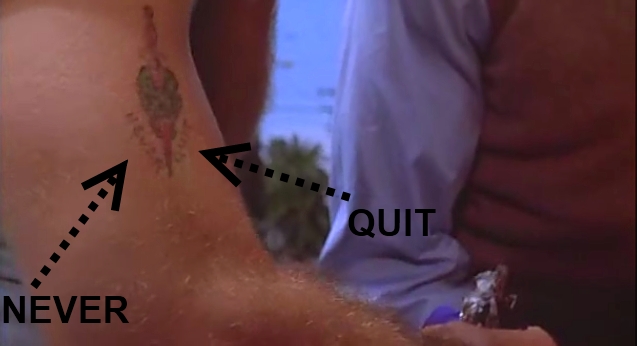 16. Triangulating someone’s position across multiple computer monitors, then following that person’s every move across a city grid. (Enemy of the State)
16. Triangulating someone’s position across multiple computer monitors, then following that person’s every move across a city grid. (Enemy of the State)
17. The Rock Bottom (World Wrestling Entertainment)
18. The white hats riding off into the sunset. (Take your pick)
Marlon Brando on Success & Failure (1957)
“Too much success can ruin you as surely as too much failure. Of course, you can’t always be a failure. Not and survive. Van Gogh! There’s an example of what can happen when a person never receives any recognition. You stop relating; it puts you outside. But I guess success does that, too. You know, it took me a long time before I was aware that that’s what I was—a big success. I was so absorbed in myself, my own problems, I never looked around, took account. I used to walk in New York, miles and miles, walk in the streets late at night, and never see anything. I was never sure about acting, whether that was what I really wanted to do; I’m still not. Then, when I was in Streetcar, and it had been running a couple of months, one night—dimly, dimly—I began to hear this roar. It was like I’d been asleep, and I woke up here sitting on a pile of candy.”
(Excerpted from Truman Capote’s New Yorker profile “The Duke in His Domain”)
Moving On: Manslaughter
John Vollrath filed out of Club Kaladu along with his girlfriend and his sister. Chris and Adam Short followed suit a moment later, slipping out a north-side exit with Joseph Mader a few feet behind. The three of them pursued Vollrath to his vehicle, where Vollrath was now standing with the driver’s side door ajar. There had been an exchange 10 minutes prior, and Adam Short began shouting at Vollrath about an apparent comment he had made on his way out of the bar. There was a shove, and then a salvo; Vollrath tagging Adam soundly with a wide right to the eye.
Chris Short kicked Vollrath’s door shut. Joseph Mader grabbed a hold of the 23-year old from behind. They were in it now, the lock of the barrel, with John’s sister screaming wildly from the car. Chris Short pulled Vollrath’s shirt up over his shoulders – a maneuver which momentarily blinded the ex-naval officer – while cuffing both his arms. Adam gained his footing, then joined his brother in the fray. There were winding hooks and anchor punches, open blows to the skull and torso. Vollrath spiraled, his body pinwheeling. One hand jerked him forward, another knocked him back. With nothing left but for to falter, something cranial short-circuited, causing Vollrath to stiffen, then go limp, much like a sawhorse being tipped onto its side. Chris Short removed his shirt and threw it down across John’s body. Chris and his brother disappeared into a motel room a hundred meters down the street.
***
I was in Delaware County that weekend, attending a funeral for Joe Kennedy’s nephew, who had died during a sledding accident. Joe and I were sitting at a sports bar on MacDade Boulevard when I noticed a headline running across the TV. “One Dead in Wildwood Beating,” the headline read. It came accompanied by a headshot.
“Hey, I know that guy,” I said. It would have been more accurate to explain that I knew of him.
There had been an incident a couple of winters prior. John Vollrath had punched out several screens bordering a porch outside Gerry Vessels’ house. Vollrath was drunk, and he had made his getaway alone. Gerry spent the better part of a year threatening reprisal, usually by way of intermediaries. Mike Delinski wanted nothing to do with the situation. This despite being long-time friends with both Gerry and John.
Mike was working at Club Kaladu during the winter of 1997, though he was off throughout the night when John Vollrath had been fatally beaten outside. There was only one man working at the door of Club Kaladu on that evening, and he was doubling as a barback, as well. Generally speaking, Jason Palombaro was the closest thing to muscle inside Kaladu. Jason’s father owned the establishment, and he had tricked the joint out with spinning lights and a decadent sound system; a wooden dance floor, industrial fog.
As for Vollrath’s attackers, Chris and Adam Short were primarily affiliated with a local nightclub named Jimmy’s. Adam was only 18 and Chris 20, yet they were plugged into a scene that allowed them to come and go from any bar on the island. Joseph Mader was 21, a seasonal bouncer. He, too, was primarily affiliated with Jimmy’s uptown.
***
John Vollrath had been pronounced dead at 3:44 on the morning of Saturday, February 15th, a little over an hour after the initial call to 9-1-1. The cause of death: blunt-force trauma to the head. The Shorts had been apprehended inside the Landmark Motel; Joseph Mader on his way back to North Wildwood. All three were arraigned on charges of Manslaughter and Conspiracy, a thin matter of intent separating the applicable charges from Murder. Chris and Adam were eventually released on $100,000 bail. Joseph Mader remained behind bars in Cape May County.
On Monday, February 17th, The Philadelphia Daily News posted a photo of John Vollrath on its cover, a clean-cut boy in navy blues. The accompanying article portrayed Vollrath as a born-again Christian; a noble soul whose only reason for being out on that evening was to serve as a designated driver for his sister. One day later, The Daily News ran with a similar narrative pertaining to the accused. Joseph Mader was described as being a “big teddy bear” who just got mixed up with the wrong crowd. Chris and Adam Short were depicted as having come from a hard-working, South Philadelphia family. The Shorts were a churchgoing people, the salt of the earth.
These stories came well-researched, albeit stricken by the usual bias and holes. To wit: The Daily News reported Chris Short was a student at Penn State, presumably because that was exactly what Chris Short had told the Wildwood Police at the time of his arrest. But two days later, on February 19th, Penn State released a statement, explaining that Christopher Short had not been enrolled for the better part of a year. Initial reports portraying Adam as an All-Catholic letterman took a hit once it was revealed he had abandoned the Widener football team following the first few weeks of training camp. Meanwhile, a lot of the positive statements regarding the Short family, regardless of whether they were true, came by way of neighbors along Jackson Street – a tight-knit community of rowhomes with a reputation for taking care of its own.
Matters became increasingly muddled due to a discrepancy regarding what had led to an initial exchange between John Vollrath and the Shorts inside Kaladu. One version favored Vollrath, insisting he had been eyeing up the Shorts for several minutes, having noticed them making fun of a mentally-handicapped man on the dance floor. Another supported the accused, suggesting Adam had approached John to request that he stop leering at their girlfriends. In all matters pertaining to the Defense, any sequence of events appeared largely immaterial. Counsel was tasked with exonerating a trio that had pursued one victim to the extent of pummeling him amidst the horrified screams of his girlfriend and his sister. Varying attempts to justify that by explaining the victim might have been staring at someone in an untoward manner, well, those attempts would represent some strange alchemy, indeed.
And yet these narratives, these stories people told themselves, they had a way of slithering into the zeitgeist, where they were geared and bent and refashioned into causes. Less than 24 hours after John Vollrath’s death, certain locals took to pointing fingers at Club Kaladu, insisting the establishment lacked a proper carding policy, perhaps an able crew of bouncers. Others began calling for Joe Palombaro to be stripped of his license, to be forbidden from operating another club within the city limits. But the major push – the push that had been lying dormant in city council for years – took the form of an emotionally-charged effort to roll the closing times at Wildwood bars back from 5 AM (during the summertime) to 3 AM, year-round. This was a ploy that preyed on hearts and minds, a way of convincing the dejected that John Vollrath – a local who had sustained a fatal beating at 2:30 AM in the middle of the winter – would be remembered as a martyr, not a victim. The problem was it missed the point, in much the same way Wildwood at large had been missing the point for well over a decade.
Old-timers immortalized the original Wildwood as a picture postcard where moonlight split the ocean as lovers basked along its side. Theirs was a world of Artie Shaw and Easter Sunday; pastel parasols and the annual Baby Parade. Meanwhile, current business owners continued promoting this idea of Five-Mile Island as the rootin-tootin den of inequity it had very obviously become. The lack of balance created a schism, with cold-war battle lines being drawn along the middle. On the one side, staunch tradition; on the other, debatable progress, with very little in between.
The Moreys had begun to spearhead an effort commemorating Wildwood’s Doo-Wop era in the hopes it might achieve for local tourism what the Victorian era had long been accomplishing for Cape May. It was the Broken Windows Theory, repurposed – develop an establishment full of architectural flare, and you’ll attract a clientele that reflects that. Dress the joint up like a fraternity or a brothel, and you’ll attract a clientele that reflects that, as well.
Redevelopment was only part of the equation. Another aspect had to do with recognizing what an indispensable part of the economy summer tourism represented. There was an emboldened sense among locals that the summer people added up to nothing more than easy money. Take their income, serve them with citations, yet never recognize that the town’s offseason livelihood depended on them. These people, these citizens for a day, they deserved the respect their taxable contributions should afford. In a town of weighted prices, on a boardwalk full of scams, there should be no feigned surprise when rain-made rubes returned the favor by vacationing at another place.
***
At the time of John Vollrath’s death, I had been living in Wildwood – on and off – for five years. Two summers before I had arrived there, on Memorial Day weekend of 1990, Susan Negersmith’s body had been found behind a dumpster outside Schellenger’s Restaurant. There were 26 areas of trauma about Negersmith’s body, including vaginal bruising, unidentified blood and the unidentified presence of semen. The official cause of death: alcohol poisoning, complicated by exposure. For a time, skeptics assumed Wildwood might have been eager to dismiss the case due to the fact there hadn’t been any capital murder stemming out of the city for years. Despite the eventual intervention of both the FBI and the State Police, along with a re-examination of Negersmith’s preserved larynx (that changed the official cause of death to strangulation), Susan Negersmith’s case had gone seven long years without closure. In the meantime, DNA evidence had become a forensic mainstay, prompting one to wonder what could have – and should have – been, assuming Negersmith’s case had been investigated consistently. Any chance of that seemed vague now, relegated to black whispers, unfounded speculation regarding whether unnamed locals might have been accompanying Negersmith on the evening before her body was discovered. Court documents show police encountered Negersmith a little after 2 AM on her way home from a party. The 20-year old female was being assisted by several males, and after engaging with one of those males, the Wildwood Police allowed the group to continue on their way. This, of course, raises the question: What would motivate a sworn officer to turn his back on an underage female who was barely able to walk, a female who was staggering along an open-air mall at 2 AM with what appeared to be an all-male contingent of strangers? An honest answer might reveal some damning evidence. And yet, without any requisite preponderance, it appeared as irresponsible to speculate on the one hand as it did for the police not to intervene on the other.
Word of the Negersmith case reverberated like a rifle-crack during the opening holiday weekend of the 1990s. In retrospect, it should have been viewed more like a harbinger. During the summer of ’92, a fatal stabbing during Senior Week, followed by the sudden disappearance of a Canadian transvestite who still had not been found. During the winter of ’93, the execution-style murder of an unarmed father that traced its way back to the LA Bloods. During the winter of ’96, the murders of Erin West and Becky Russell, followed by a fatal stabbing at the Firehouse Tavern. And now, less than two months into 1997, the brutal death of a Wildwood local at the hands of three other males, all of whom were well known throughout the island. Whoever you were, whatever your association to this city, it was clear that something integral had soured. One could feel it in the blocks just off the boardwalk, one could sense it whenever wandering alone. The danger, it was palpable, and it came hanging like an old snail’s gut now, laid out bare for all the world to see. John Vollrath’s case was moving forward. The case of Susan Negersmith, a summer tourist from New York, would be forced to inch and claw its way back into the public sphere.
Day 1,196
(Moving On is a regular feature on IFB.)
©Copyright Bob Hill
Lou Reed on Rewriting (1989)
“Rewriting really makes you focus. Haggling for weeks over a word. Just focusing. I tried all the vocals out before I ever went in the studio, and I’ve gotten pretty good at this, so that if I hear it in my head I ought to be able to sing it. But when we tried it out in the studio, sometimes I couldn’t quite get it right because, as I said, there’s so much rhythm going on in the words that is supposed to be working against the beat, and I could hear it clear as a bell in my mind but I couldn’t always execute it. Whenever I found that I couldn’t do it I didn’t start tearing my lyric apart because I knew it was OK, I just knew that it was me who couldn’t get into it, so we would keep at it until I did it right. It took hours sometimes, and it was maddening because I got so caught up trying to do it right that I’d lose the feel and the meaning of the words.”
(From the Rolling Stone Interview)
Answered Prayers
Click through for full-image gallery.
What to Expect During the Final 7 Episodes of ‘Mad Men’
One can see it throughout “Waterloo” – the closing episode of Mad Men, Season 7.1 – this era, these characters, Matthew Weiner seeks to bring them all back to circle. Most things being cyclical in nature (as Jon Hamm and several Mad Men promos have recently alluded to them being), with significant weight being afforded to the notion Weiner’s team is going to leave the lot of Mad Men‘s characters better off than they began, one can begin to see the forest for its trees. And so here now, based on minor clues and insight, is what one can expect to see by way of 10 primary characters during Mad Men‘s final run:
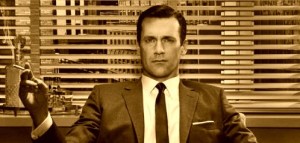 Don Draper. The story of Don Draper reads like a new-age Gatsby, perhaps a more realistic one, at that, with the difference being Don Draper has already realized his nadir, and begun to claw his way back. Don is a master of reinvention, and this is critical, as rebirth signaled Don’s emergence on the scene and it’ll likely play a role throughout his bow.
Don Draper. The story of Don Draper reads like a new-age Gatsby, perhaps a more realistic one, at that, with the difference being Don Draper has already realized his nadir, and begun to claw his way back. Don is a master of reinvention, and this is critical, as rebirth signaled Don’s emergence on the scene and it’ll likely play a role throughout his bow.
As the age of the antihero begins to exceed its critical mass, showrunners find themselves hard-pressed to put a harrowing end to primary characters. Tony Soprano is presumably dead (regardless of how some asshole misinterprets David Chase), Omar Little is dead, Walter White is dead, Nucky Thompson is dead, and so is Jackson Teller. Fortunately, Matthew Weiner seems more interested in salvation. In a story with the setting of Mad Men, it wouldn’t make much sense for Don Draper to simply kill himself. Lane Pryce and Adam Whitman have already done that, and the chances of seeing three significant characters committing suicide in one critically-acclaimed series seem unlikely. Forget about the opening credits. If you believe any television exec secretive enough to avoid releasing new footage prior to every upcoming season is simultaneously stupid enough to tip his hand during the opening seconds of every episode … well, that might be a poor assumption, at best. The only way a ritual suicide would make any sense would be if Don somehow went out as a martyr, bequeathing a great deal of his fortune to Anna Draper’s niece, or, more to the point, that niece’s child. The idea of Don providing a chance for the indirect descendant of a man whose identity he stole – a child born into this world under similar circumstances, no less – would appear to thread the needle almost seamlessly. Yet the thing is, there really is no need for Don to die in order for this to happen. Instead, look for Don to make a permanent move out west, providing full support for Anna Draper’s niece’s child. Don may even raise the child as his own, depending on its status. Look for Don to abandon advertising, to reinvent himself in California. Given the time period – and the setting – one might even imagine Don as securing a foothold in the computer industry. Silicon Valley represented a goldmine during the seventies, and the idea of Don getting in on the ground floor would bridge both eras like a lattice. The long-shot? Don becoming some sort of pitchman inside the Hollywood machine. Would he be fantastic? Sure. But the publicity arm of Hollywood seems like an unlikely destination for any man who’s vowed to leave that sort
of thing behind.
 Peggy Olson. One of the more fascinating aspects of a long-running serial involves going back after the curtain falls and re-watching the original pilot. Breaking Bad is almost heartbreaking in this manner. Along those lines, no showrunner seems more aware of what each character was initially meant to represent than Matthew Weiner. Less than 15 minutes into the Mad Men pilot, Peggy Olson is introduced as “Don’s girl,” one in a revolving carousel of secretaries handling his desk. Peggy arrives appearing homely, green and unassuming, yet deceivingly intelligent. Looking back – even without the benefit of Season 7.2 – it’s clear that Peggy’s character was always meant to be a symbol of empowerment. The only way to properly seal Peggy’s ascent is by placing her in the same position Don originally inhabited back in 1960. Look for Peggy to represent the creative force in Jim Cutler’s advertising agency of the future. She may be a partner (albeit just barely), and she may be on the cusp. Mad Men’s writing team has been teasing this for the better part of a decade, most demonstrably when Peggy eases into Don’s chair toward the end of Season Six, caught in the pose of an iconic silhouette from the show’s opening credits.
Peggy Olson. One of the more fascinating aspects of a long-running serial involves going back after the curtain falls and re-watching the original pilot. Breaking Bad is almost heartbreaking in this manner. Along those lines, no showrunner seems more aware of what each character was initially meant to represent than Matthew Weiner. Less than 15 minutes into the Mad Men pilot, Peggy Olson is introduced as “Don’s girl,” one in a revolving carousel of secretaries handling his desk. Peggy arrives appearing homely, green and unassuming, yet deceivingly intelligent. Looking back – even without the benefit of Season 7.2 – it’s clear that Peggy’s character was always meant to be a symbol of empowerment. The only way to properly seal Peggy’s ascent is by placing her in the same position Don originally inhabited back in 1960. Look for Peggy to represent the creative force in Jim Cutler’s advertising agency of the future. She may be a partner (albeit just barely), and she may be on the cusp. Mad Men’s writing team has been teasing this for the better part of a decade, most demonstrably when Peggy eases into Don’s chair toward the end of Season Six, caught in the pose of an iconic silhouette from the show’s opening credits.
The most recent episode of Mad Men included a scene during which Peggy walks into her apartment, entering into an exchange with a contractor. This contractor’s name is Nick, and at one point Nick hands Peggy his number, saying, “In case you have any odd jobs, too small for Kaz.” The odds are long against this contractor disappearing. In fact, a guy like Nick makes perfect sense for Peggy Olson (i.e., a young Don Draper married the cotillion queen; why not have Peggy get it on with a strapping Dan?). Peggy’s got an apartment opening up and she may be in need of a super. To have Peggy Olson end up in the same place Don began, well, that would be some symmetry, to say the least.
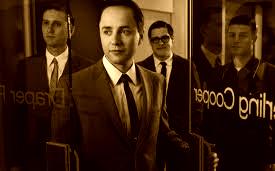 Pete Campbell. In terms of arc, Roger Sterling represents the same to Peter Campbell as Donald Draper does to Peggy. Though the show initially harped on the surrogate relationship between Don and Pete (with Pete perennially pushing for – and eventually earning – Don’s approval), Pete’s ongoing pissing match with Roger has taken center stage. Pete retains that blue-blood air, a family crest that got his foot inside the door. Yet at the age of 36, one can see him maturing into partner … an ill-begotten brat who’s earned his keep along the way. In Jim Cutler’s advertising agency of the future, expect Pete Campbell’s name to be the second on the door.
Pete Campbell. In terms of arc, Roger Sterling represents the same to Peter Campbell as Donald Draper does to Peggy. Though the show initially harped on the surrogate relationship between Don and Pete (with Pete perennially pushing for – and eventually earning – Don’s approval), Pete’s ongoing pissing match with Roger has taken center stage. Pete retains that blue-blood air, a family crest that got his foot inside the door. Yet at the age of 36, one can see him maturing into partner … an ill-begotten brat who’s earned his keep along the way. In Jim Cutler’s advertising agency of the future, expect Pete Campbell’s name to be the second on the door.
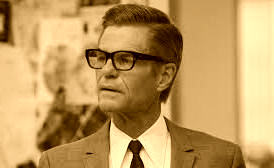 Jim Cutler. One of the last things Bert Cooper said to Roger Sterling – or anyone, for that matter – was that Jim Cutler has a vision. For six-and-a-half seasons, Bert Cooper represented the most whimsical of Mad Men‘s characters, stunningly unaware of his own eccentricity. Cooper was the sage, buried deep inside his vault, popping out only occasionally to dictate proper course. Those glasses, the elitism, an outward lack of physical emotion … Jim Cutler is slowly turning into Bertram Cooper. In the ad agency of the future, Cutler will become the figurehead Bertram Cooper always was, steering the ship when it prevails on him to do so.
Jim Cutler. One of the last things Bert Cooper said to Roger Sterling – or anyone, for that matter – was that Jim Cutler has a vision. For six-and-a-half seasons, Bert Cooper represented the most whimsical of Mad Men‘s characters, stunningly unaware of his own eccentricity. Cooper was the sage, buried deep inside his vault, popping out only occasionally to dictate proper course. Those glasses, the elitism, an outward lack of physical emotion … Jim Cutler is slowly turning into Bertram Cooper. In the ad agency of the future, Cutler will become the figurehead Bertram Cooper always was, steering the ship when it prevails on him to do so.
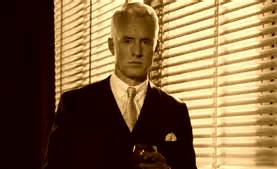 Roger Sterling. What does one do after he realizes money only represents one-third of the equation? If one is Roger Sterling, he winds up embarking on a vision quest in his 50s, drifting off in the hopes of rediscovering what’s lost. Expect Roger to take the money and run, spurred into action by the departure of Don Draper. Men like Roger Sterling prey upon prestige in the same way men like Cutler prey upon the investment. With little to gain and nothing to earn, you can expect Roger Sterling to bow out fiscally, and alone.
Roger Sterling. What does one do after he realizes money only represents one-third of the equation? If one is Roger Sterling, he winds up embarking on a vision quest in his 50s, drifting off in the hopes of rediscovering what’s lost. Expect Roger to take the money and run, spurred into action by the departure of Don Draper. Men like Roger Sterling prey upon prestige in the same way men like Cutler prey upon the investment. With little to gain and nothing to earn, you can expect Roger Sterling to bow out fiscally, and alone.
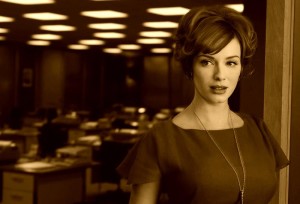 Joan Harris (nee Holloway). Matthew Weiner’s gone on record, explaining he knew exactly how Don Draper’s story would end when he originally pitched Mad Men. By way of contrast, Weiner’s also admitted he hadn’t originally conceived of Joan Holloway as being a recurring character. This is telling, in the same way it’s been telling to see the lack of evolution surrounding Joan throughout the seventh season. The perception of latter-day Joan is that of a beautiful-yet-aging woman who had to sleep her way into a minority share. Whatever comes of her, it won’t amount to much. Maybe Joan stays, maybe she leaves. Maybe she morphs into Ida Blankenship (who also shared a brief affair with Roger Sterling). The most tender thing about Joan is knowing her best assets are behind her. She’s got the money, yet she lacks the ingenuity that sent Peggy into orbit. You’ve gotta wonder what type of impact that might have on her, long-term.
Joan Harris (nee Holloway). Matthew Weiner’s gone on record, explaining he knew exactly how Don Draper’s story would end when he originally pitched Mad Men. By way of contrast, Weiner’s also admitted he hadn’t originally conceived of Joan Holloway as being a recurring character. This is telling, in the same way it’s been telling to see the lack of evolution surrounding Joan throughout the seventh season. The perception of latter-day Joan is that of a beautiful-yet-aging woman who had to sleep her way into a minority share. Whatever comes of her, it won’t amount to much. Maybe Joan stays, maybe she leaves. Maybe she morphs into Ida Blankenship (who also shared a brief affair with Roger Sterling). The most tender thing about Joan is knowing her best assets are behind her. She’s got the money, yet she lacks the ingenuity that sent Peggy into orbit. You’ve gotta wonder what type of impact that might have on her, long-term.
 Betty Francis (nee Draper). There are only two reasons Betty Francis might play a critical role along the stretch. The first has to do with Don’s children, assuming that he leaves for California. The second has to do with what Betty knows regarding Don’s identity. Keep in mind, Henry Francis is an aspiring politician. The higher he rises, the greater the probability someone might dig into his spouse’s past. Is this a reach? It could be. But it’s also the most viable currency in terms of turning up the heat. With Bert Cooper out of the picture, and Jim Cutler slithering into Don’s garden, a reveal of that magnitude could shift the burners on, full-blast. Would disclosure set Don free? Would it send him into exile? In an odd sort of way, Betty Francis holds the key.
Betty Francis (nee Draper). There are only two reasons Betty Francis might play a critical role along the stretch. The first has to do with Don’s children, assuming that he leaves for California. The second has to do with what Betty knows regarding Don’s identity. Keep in mind, Henry Francis is an aspiring politician. The higher he rises, the greater the probability someone might dig into his spouse’s past. Is this a reach? It could be. But it’s also the most viable currency in terms of turning up the heat. With Bert Cooper out of the picture, and Jim Cutler slithering into Don’s garden, a reveal of that magnitude could shift the burners on, full-blast. Would disclosure set Don free? Would it send him into exile? In an odd sort of way, Betty Francis holds the key.
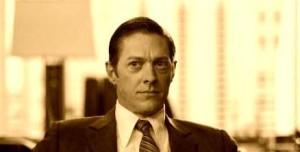 Ted Chaough. Ted Chaough wants out, which is why it’s conceivable Don and Ted might reemerge as partners, in a new venture; one that reinvigorates them in the same way corporate advertising previously did. Barring that, expect Ted to show very little rage against the dying of the light. He’s been there; he’s done that. He wants a break that’s free and clean.
Ted Chaough. Ted Chaough wants out, which is why it’s conceivable Don and Ted might reemerge as partners, in a new venture; one that reinvigorates them in the same way corporate advertising previously did. Barring that, expect Ted to show very little rage against the dying of the light. He’s been there; he’s done that. He wants a break that’s free and clean.
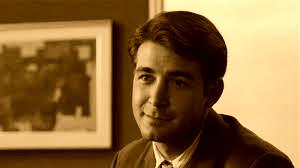 Bob Benson. Bob Benson was brought in to introduce a point. And that point was that being gay and poor and Podunk in the late 1960s had the same stigma in a business culture as being black or Jewish or Dick Whitman in the fifties. Bob Benson … Don Draper. You do the math. We’ve seen what happens when an executive is unceremoniously outed during the sixties. Perhaps we’ll see how far that culture has evolved during the seventies.
Bob Benson. Bob Benson was brought in to introduce a point. And that point was that being gay and poor and Podunk in the late 1960s had the same stigma in a business culture as being black or Jewish or Dick Whitman in the fifties. Bob Benson … Don Draper. You do the math. We’ve seen what happens when an executive is unceremoniously outed during the sixties. Perhaps we’ll see how far that culture has evolved during the seventies.
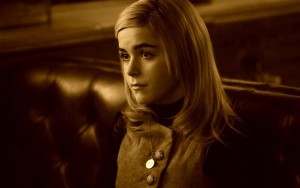 Sally Draper. What viewers saw during “Waterloo” was the early maturation of Sally Draper, equal parts mother and father. Consider a scene in the Francis’ backyard. Sally kisses a boy, disregarding Betty’s one-time rule that, “You don’t kiss boys; boys kiss you.” Note that Sally kisses the pimple-faced nerd, as opposed to an older bohunk who arrives wearing a football jersey (this during an episode where Jim Cutler refers to Don as “a football player in a suit”). Following the kiss Sally remains in the backyard, alone, where she smokes a cigarette, striking the same pose Betty Draper did during Season One. Expect more along these lines throughout the remaining episodes. Sally is her mother. She’s her father. She’s seeking independence or validation from each one.
Sally Draper. What viewers saw during “Waterloo” was the early maturation of Sally Draper, equal parts mother and father. Consider a scene in the Francis’ backyard. Sally kisses a boy, disregarding Betty’s one-time rule that, “You don’t kiss boys; boys kiss you.” Note that Sally kisses the pimple-faced nerd, as opposed to an older bohunk who arrives wearing a football jersey (this during an episode where Jim Cutler refers to Don as “a football player in a suit”). Following the kiss Sally remains in the backyard, alone, where she smokes a cigarette, striking the same pose Betty Draper did during Season One. Expect more along these lines throughout the remaining episodes. Sally is her mother. She’s her father. She’s seeking independence or validation from each one.
Related: “Ranking the Women in Don Draper’s Sex Life (1960-1969)”
(The final seven episodes of Mad Men begin Sunday, April 5th on AMC.)

